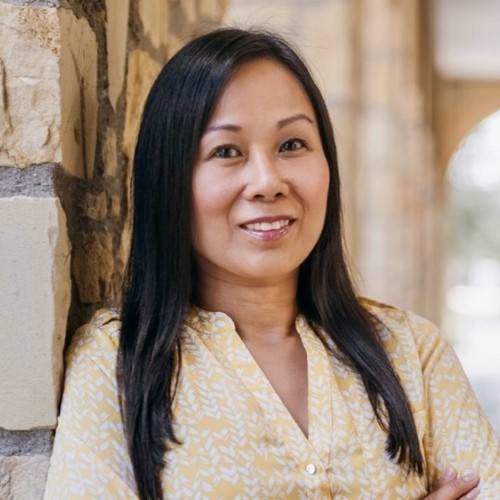 Dental radiographs are used to determine the age of migrant children, but they may not be the best option.
Dental radiographs are used to determine the age of migrant children, but they may not be the best option.
Claire Braaten, associate professor of criminology at Texas A&M University-San Antonio, details why.
Claire Nolasco Braaten is an associate professor of criminology at Texas A&M University-San Antonio. She obtained her Ph.D. in Criminal Justice from Sam Houston State University, her Master’s in International and Economic Business Law from Kyushu University in Japan, and both her Bachelor’s Degree in Political Science and her J.D. in Law from the University of the Philippines College of Law, where she was a member of the Order of the Purple Feather, the law school’s honor society.
She has published in several peer-reviewed criminal justice journals, including Deviant Behavior, Law & Society, Journal of Refugee Studies, Journal of Criminal Justice, Crime Law and Social Change, Journal of Criminal Justice Education, and Security Journal as well as law reviews such as the American Journal of Criminal Law and Criminal Law Bulletin.
Her book with co-author Daniel Braaten titled, Benched Justice: How Judges Decide Asylum Claims and Asylum Rights of Unaccompanied Minors was published by Lexington Books/Rowman & Littlefield in September 2023. The book examines judicial decision making in asylum proceedings involving unaccompanied alien children in the U.S. at the level of immigration courts, BIA proceedings, and federal district and circuit courts.
Daniel Braaten is an associate professor of political science at Texas A&M University-San Antonio. He received his Ph.D. in Political Science from the University of Nebraska-Lincoln in 2012 and his Bachelor’s Degree in Political Science from North Dakota State University. Braaten’s research touches many areas of international relations, comparative politics, and American politics. His research had been published in Law & Policy, International Studies Review, Journal of Refugee Studies, International Journal of Refugee Law, and the Journal of Environment & Development among other outlets. He has also written for public outlets such as The Conversation, Waging Nonviolence, and the San Antonio Express News among others. His faculty Web page: https://apps.tamusa.edu/course-information/Profile/Faculty/695?=Daniel-Braaten
Nebraska-Lincoln in 2012 and his Bachelor’s Degree in Political Science from North Dakota State University. Braaten’s research touches many areas of international relations, comparative politics, and American politics. His research had been published in Law & Policy, International Studies Review, Journal of Refugee Studies, International Journal of Refugee Law, and the Journal of Environment & Development among other outlets. He has also written for public outlets such as The Conversation, Waging Nonviolence, and the San Antonio Express News among others. His faculty Web page: https://apps.tamusa.edu/course-information/Profile/Faculty/695?=Daniel-Braaten
Dental Radiographs and Unaccompanied Minors
How reliable are dental radiographs in determining the age of asylum applicants who entered the U.S. claiming minority status? This is one of the primary issues raised in federal courts by unaccompanied minors claiming benefits under U.S. laws that apply solely to juvenile asylum seekers.
The existing legal framework allows officials to determine minority status using various evidence, including dental radiographs. However, concerns about their reliability have arisen, as radiographs can’t definitively determine age due to factors like genetics and diet.
Our research shows that different U.S. district courts varied in their opinions on the validity of dental radiographs proving adulthood. Courts tended to accept them more when minors provided false documents. They also favored comprehensive evidence over relying solely on dental radiographs.
Some courts were more accepting if radiographs provided a range of probability percentages for the applicant’s age. However, one court questioned a medical assessment’s validity due to missing information about the professional’s expertise, ethnic and genetic factors, and probability percentages.
In a separate case, a district court criticized immigration officers for exclusively relying on dental radiographs, citing their suspicions about the authenticity of Guinean birth certificates. The court argued that prejudging the legitimacy of an entire country’s documents based on national origin constitutes unwarranted discrimination.
The use of dental radiographs in age determinations for asylum applicants remains contentious, with U.S. district courts interpreting their validity differently, taking into account the overall evidence, document credibility, concerns about discrimination, and the qualifications of professionals conducting age assessments.

